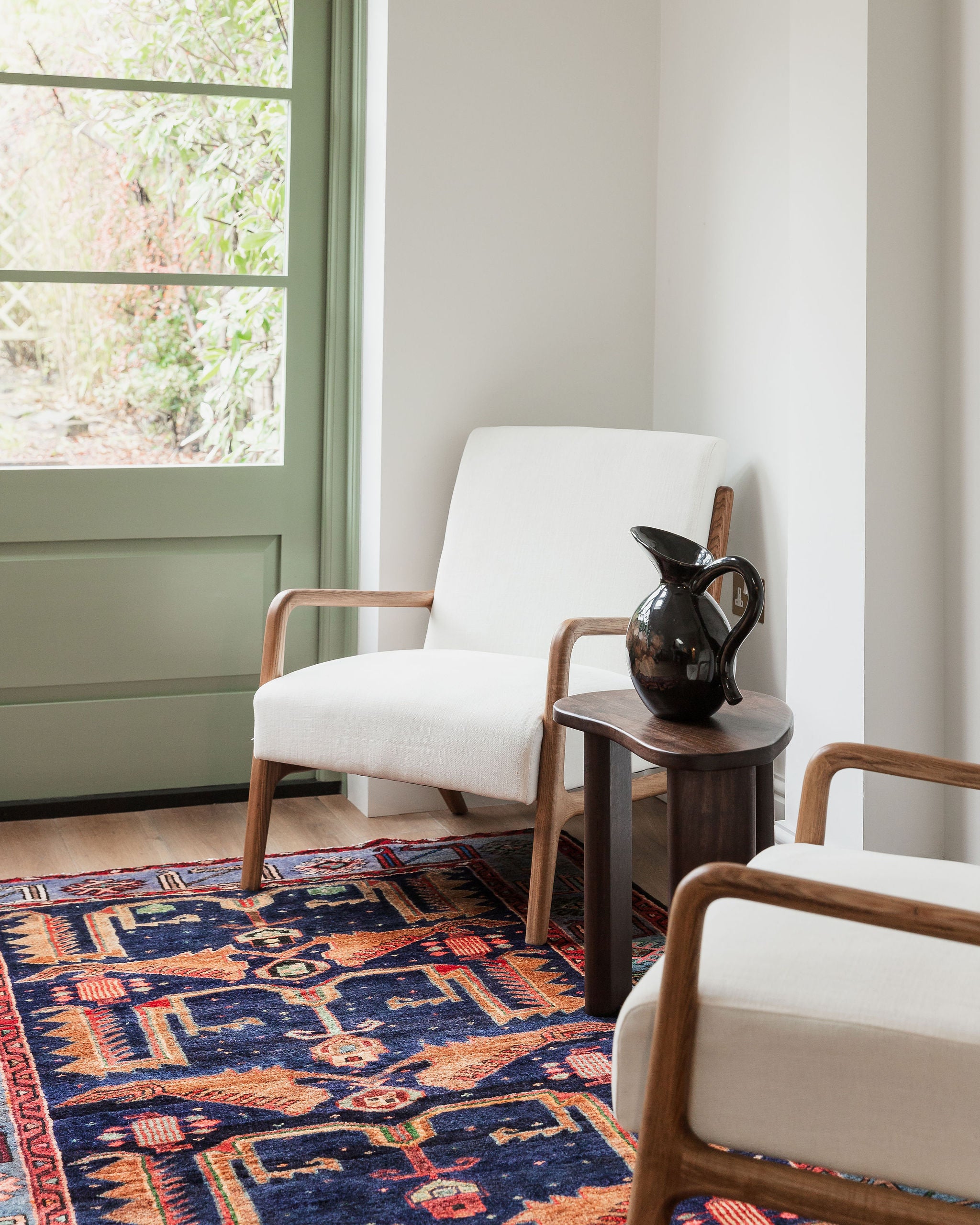The Environmental Impact of Handmade Rugs: Why Handmade is Better
As more consumers prioritise sustainability in their purchasing decisions, the impact of our home decor choices has come into sharper focus. Handmade rugs, crafted from natural materials using traditional techniques, stand in stark contrast to their mass-produced counterparts, which often rely on synthetic materials and harmful production practices. But what exactly makes handmade rugs a greener choice?
Let's dive into the environmental benefits of choosing natural, handmade rugs and explore why they are a superior option—not only for your home but for the planet, too.
1. Natural Materials vs. Synthetics: Understanding the Difference
One of the most significant environmental benefits of handmade rugs is the use of natural, sustainable materials such as wool, silk, cotton, and jute. Unlike synthetic fibres (e.g., nylon, polyester, and polypropylene), which are derived from petroleum and involve energy-intensive manufacturing, natural fibres are renewable, biodegradable, and much less taxing on the environment.
Why it Matters:
- Biodegradability: Synthetic fibres can take hundreds of years to decompose, releasing harmful microplastics into the environment along the way. In contrast, wool or cotton rugs break down naturally, leaving no toxic residue.
- Renewable Resources: Natural materials like wool are harvested from sheep without harming the animal, and jute plants grow quickly and abundantly with minimal water and pesticide use.
2. Sustainable Dyeing Practices
A key feature of many handmade rugs is the use of natural dyes sourced from plants, minerals, and even insects. These dyes not only produce rich, long-lasting colours but also have a lower environmental footprint compared to synthetic dyes, which are often made from coal-tar derivatives and release hazardous chemicals into water systems during production. Do note that not all handmade rugs, or even our handmade rugs, use 100% natural dyes. Many of the high quality rugs do use some synthetic dyes, as the accuracy and perfection can only be achieved this way.
Why it Matters:
- Non-Toxic: Natural dyes do not contain toxic chemicals like heavy metals, formaldehyde, or azo compounds, making them safer for artisans, consumers, and the environment.
- Reduced Water Pollution: The dyeing process for natural fibres in handmade rugs typically uses less water and results in minimal harmful runoff compared to the industrial dyeing methods used in machine-made rugs.
Pro Tip: Choose rugs labeled as “vegetable dyed” or enquire about the dyeing process to ensure that the rug is made using environmentally friendly practices.
3. Low-Energy, Low-Impact Production
Handmade rugs are often crafted using traditional techniques passed down through generations. The process involves hand-spinning, hand-dyeing, and hand-weaving—methods that require little to no electricity and result in a minimal carbon footprint. In contrast, machine-made rugs rely on automated looms and high-speed manufacturing, which consume large amounts of energy and emit greenhouse gases.
Why it Matters:
- Reduced Carbon Footprint: Because handmade rugs are produced using manual labor rather than machinery, their overall carbon footprint is significantly lower.
- Support for Traditional Craftsmanship: Opting for a handmade rug helps preserve centuries-old artisan techniques, supporting sustainable communities and the slow-fashion movement.

4. Longevity and Durability
One of the most overlooked environmental benefits of handmade rugs is their durability. A well-crafted handmade rug can last for decades—or even centuries—with proper care. In contrast, mass-produced rugs are often designed for short-term use and wear out much faster, leading to more frequent replacements and contributing to increased waste.
Why it Matters:
- Less Waste: A high-quality handmade rug is an investment piece that stands the test of time, reducing the need for frequent replacements.
- Heirloom Potential: The longevity of handmade rugs also means they can be passed down through generations, reducing the overall demand for new materials.
Pro Tip: If you’re looking for a rug that will last, focus on construction details like knot density and material quality. The upfront investment in a handmade rug pays off in the long run, both financially and environmentally.
5. Fair Trade and Ethical Production
The environmental impact of a rug goes hand-in-hand with the ethical conditions under which it was made. Many handmade rug companies are committed to fair trade principles, ensuring that artisans are paid fairly and work in safe, healthy conditions. This focus on ethical production supports sustainable livelihoods, reduces child labor, and empowers local communities.
Why it Matters:
- Supporting Artisan Communities: When you buy a fair trade, handmade rug, you’re not just purchasing a product—you’re supporting the preservation of cultural heritage and ensuring that artisans are fairly compensated.
- Transparency in the Supply Chain: Ethical rug makers often have greater transparency in their supply chains, making it easier for consumers to trace the origins of their rug and verify that it was produced responsibly.

6. Handmade Rugs Promote the Slow Decor Movement
Just like slow fashion, slow decor emphasises quality over quantity and mindful consumption. Handmade rugs, with their intricate craftsmanship and unique designs, are the epitome of slow decor. By choosing a handmade piece, you’re rejecting the fast-paced, throwaway culture of mass production and opting for something that adds true value and artistry to your home.
Why it Matters:
- Intentional Buying: Investing in a handmade rug encourages thoughtful purchasing decisions, reducing impulse buys and promoting a deeper appreciation for quality goods.
- Unique and Personal: No two handmade rugs are identical. Each piece carries the story of the weaver, adding character and a personal touch to your space.
Pro Tip: When considering a handmade rug, think of it as more than just a floor covering. It’s a work of art that enhances your home and reflects your commitment to sustainability and conscious consumption.
Choosing a handmade rug is not just a design decision—it’s an investment in sustainability, quality, and cultural heritage. The environmental impact of natural, handmade rugs is far lower than that of synthetic, machine-made alternatives. By opting for a handmade piece, you’re supporting eco-friendly practices, preserving artisan traditions, and bringing a one-of-a-kind item into your home that’s as beautiful as it is environmentally responsible.
Ready to go green with your next rug purchase? Explore our collection of handmade rugs and make a choice that’s good for your home and the planet.









